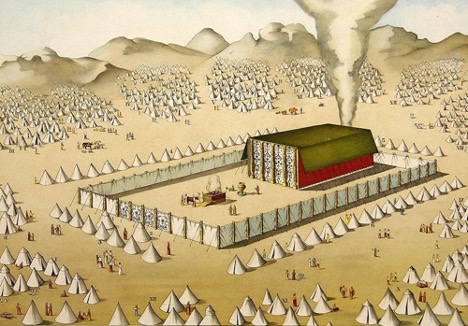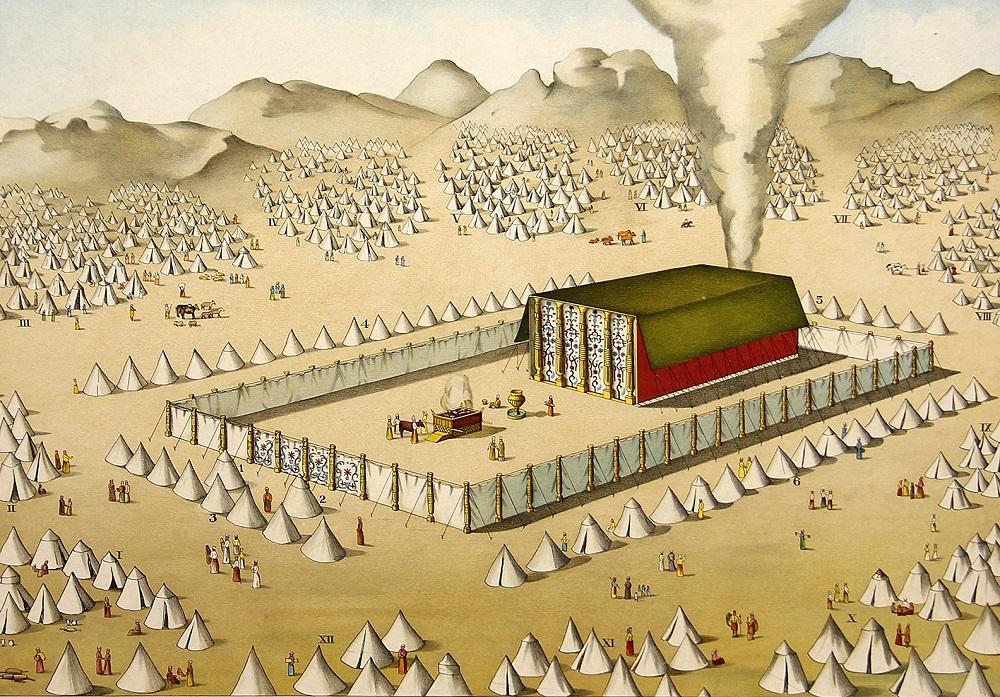
Can you imagine taking your child to worship in the Old Testament tabernacle?
When entering the courtyard, you would first experience priests slaughtering and sacrificing animals. The tabernacle’s sights, sounds, and smells would have no doubt left a lifelong impact. The bloodshed was a stark reminder that God hates sin and demands substitutionary death as payment for trespasses against a holy God.
Let’s take a tour of the Old Testament tabernacle and explore God’s designs and purposes.
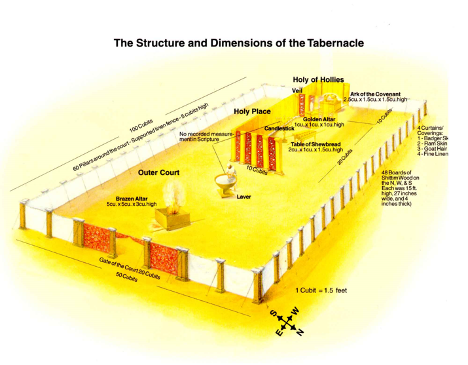
The Tabernacle
The tabernacle’s construction took place on the heels of the golden calf offense. The Israelites had become acquainted with the reality of their sinfulness, and God had threatened them with deserved annihilation. But God, rich in mercy and abounding in love, forgave their sins and reclaimed them as his people. The Lord then told his people to build a tabernacle and bring some of their resources.
In response to God’s grace, the people gave and gave, and Moses even had to force them to stop giving because they gave too much. This incredible response to God’s love is a beautiful example of what prompts good works in the hearts of believers. The people responded from the love of God with love for God and gladly gave to build his tabernacle among them.
This home, however, wasn’t a place God needed humanity to provide for him to live; instead, it was a place specifically designed for his guest, his family. The tabernacle was a relational home built for God’s ongoing interaction with his people.
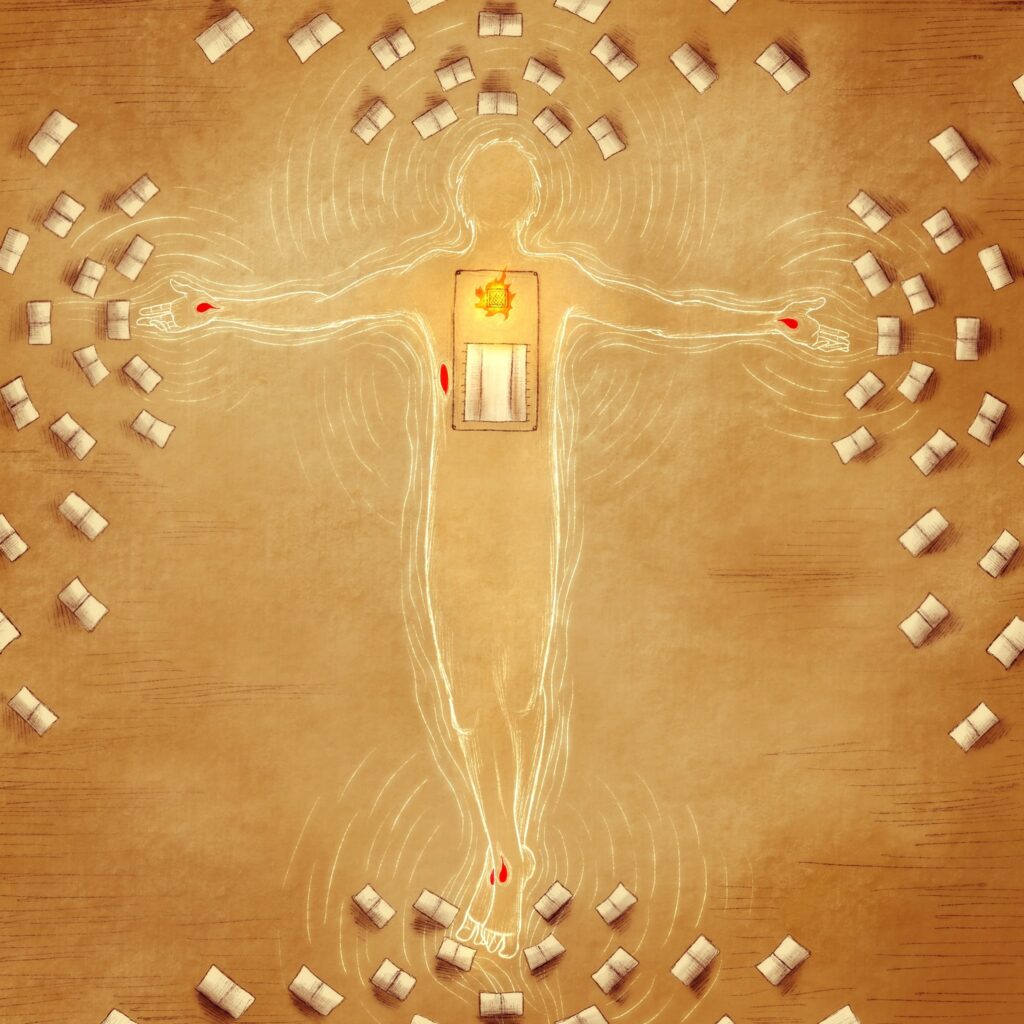
The temple was not about people working for God but rather about God working for them. It was all about showing what God would do for humanity in Jesus Christ.
The tabernacle pointed back to Eden and was a preview of the future incarnation of the Messiah. Exodus 40 reflects the language of the creation story in Genesis 1 and the Garden of Eden, where God dwelled with his people. Since the fall into sin, all creation suffered separation from God caused by sin. The tabernacle was a place where God again resided with his people.
Later, Jesus was the literal fulfillment of the tabernacle. John 1:14 says, “And the Word became flesh and dwelt among us, (and we beheld his glory, the glory as of the only begotten of the Father,) full of grace and truth.” The word “dwelt” literally is “tabernacle.” Jesus is Immanuel, God with us. Jesus came to “tabernacle” among us.
This elaborate and intricate tabernacle was the physical representation of God’s house on earth. Every aspect of God’s house teaches us something about him and how he interacts with his people. God designed the tabernacle as his great wilderness classroom.
- Its structure stressed that sin separates humanity from God.
- Its sacrifices portrayed the principle of substitutionary sacrifice and pointed to Jesus.
- Its sights, sounds, and smells preached a consistent and continual sermon.
Each object in the tabernacle had its designed and essential purpose of providing and pointing to the justification and sanctification supplied in the atonement of Jesus.
Altar of Sacrifice
The first piece of furniture ancient worshipers encountered in the tabernacle, the mizpah, was an altar of sacrifice. God’s instructions positioned the altar in the courtyard between the entrance to the tabernacle grounds and the holy place.
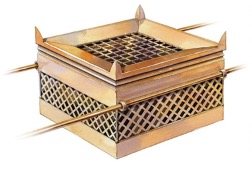
The altar, which needed to be mobile, was constructed of acacia wood overlaid with bronze. A horn protruding from each corner of the altar provided means for the priest to tie and slaughter the animal prepared for sacrifice.
Through sacrifice, God communicated that sin leads to death, and life is in blood. The sacrificial animals’ blood was a vivid and graphic declaration that life has been poured out because of sin. Animal sacrifices shed their lifeblood in place of the worshipers.
Justification through substitution was a sermon preached vividly in blood and gore.
God intended his people to feel what he was teaching when he said, “For the life of a creature is in the blood, and I have given it to you to make atonement for yourselves on the altar; it is the blood that makes atonement for one’s life” (Leviticus 17:11). Life for life, the lamb’s life for the sinner, pointed toward a future and better sacrificial lamb who would take away the world’s sin by shedding his precious blood.
Even though the sacrifice was necessary for the Israelites’ worship of God, it was not an end but rather a foreshadowing of the promised Savior. Hebrews 10:4 says, “It is impossible for the blood of bulls and goats to take away sins.”
The animal sacrifices reminded the people that their sins were costly and that shed blood was required for reconciliation. However, the animal blood was merely a picture. It pointed toward the Savior who would remove the barrier of sin on the cross once and for all.
Today, the first thing many now see when they walk into modern places of Christian worship is an empty wooden altar and, above it, a cross on which Jesus was sacrificed for the world’s sins.
Justification through substitution is preached vividly from the empty cross.
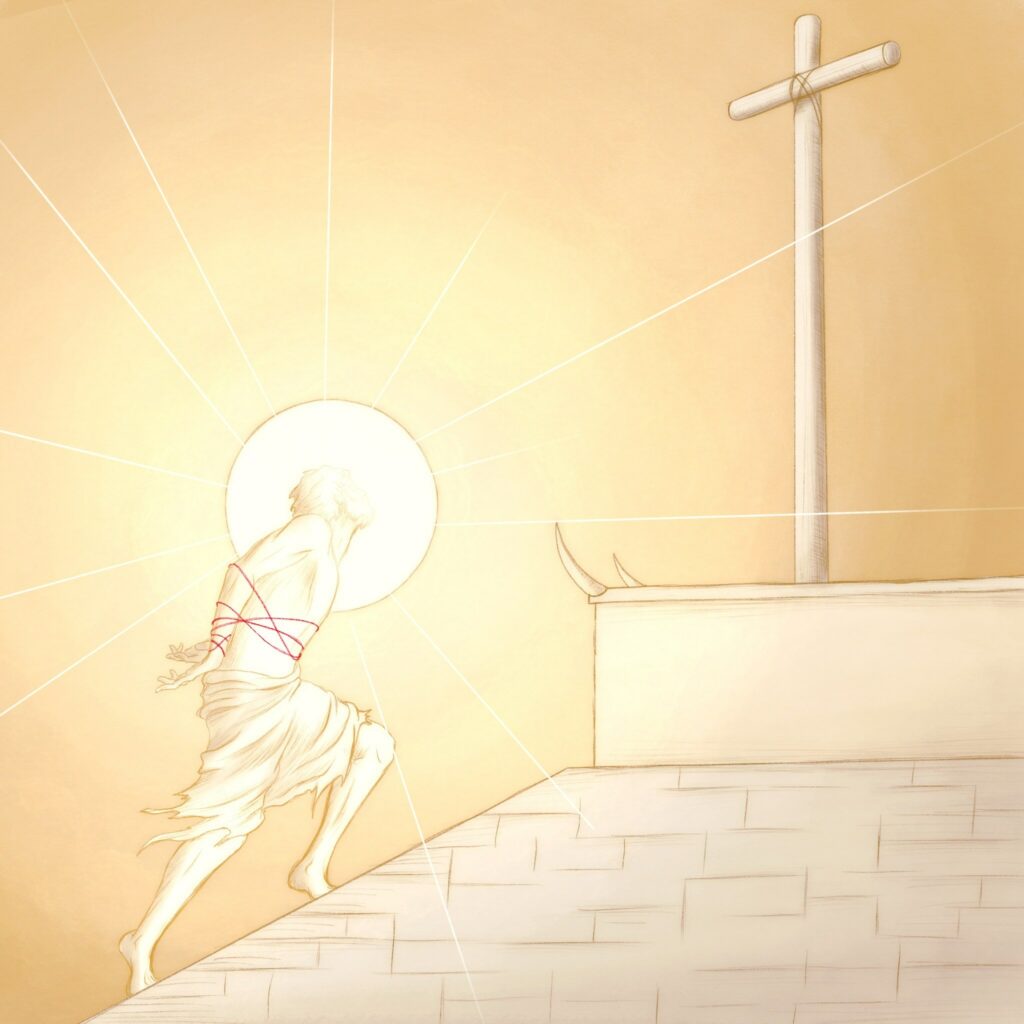
Laver (Basin) of Bronze
As worshipers moved from the bronze altar through the courtyard of the tabernacle in the direction of the holy place, they next encountered the kiyyor, a bronze basin filled with water. For the priests to safely handle holy things and walk on holy ground, they needed to wash and be qualified to serve.
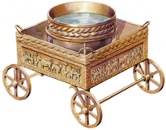
Washing required a basin, so the offering of the women’s bronze mirrors was melted down and cast into a water basin for cleansing (38:8). The bronze reflecting beneath the water allowed the priest to see that the water was pure.
Each time the priest looked into the reflecting waters’ mirror, he would see himself, his sin, and the need for a spiritual washing that only God could provide. Having been cleansed, the priests could then serve on behalf of and as representatives of the people. Finally, having been sanctified and set apart as holy, they could enter God’s presence.
So too, all of humanity needs to be washed and made holy, and God has provided a modern washing, Christian baptism, that reflects the ancient bronze basin.
Baptism is not just plain water, but water with sacred history, and part of the history is the bronze kiyyor.
Today the baptized with faith in Jesus are, “A chosen people, a royal priesthood, a holy nation, God’s special possession, that you may declare the praises of him who called you out of darkness into his wonderful light (1 Peter 2:9).”
John in Revelation expanded on this when he said, “You have made them to be a kingdom and priests to serve our God, and they will reign on the earth” (5:10). Like the priests of old, believers today can serve God and enter his presence.
In baptism, not just hands are washed but so too are hearts stained by sin. The writer of Hebrews encourages baptized believers by saying, “Let us draw near to God with a sincere heart and with the full assurance that faith brings, having our hearts sprinkled to cleanse us from a guilty conscience and having our bodies washed with pure water” (10:22). This spiritual washing offers and grants “regeneration and renewal of the Holy Spirit” (Titus 3:5) so that believers now mirror the reflection of the Messiah.
Each week, in Christian churches, the baptismal font (basin) preaches a sermon reminding those who trust in the life, death, and resurrection of Jesus that they have been washed and sanctified. Likewise, each time a believer splashes and washes their face before a mirror, they are reminded of the waters of baptism and the cleansing work that God did for them there. In the mirror, looking back at them is a saint reflecting the perfection of Jesus.
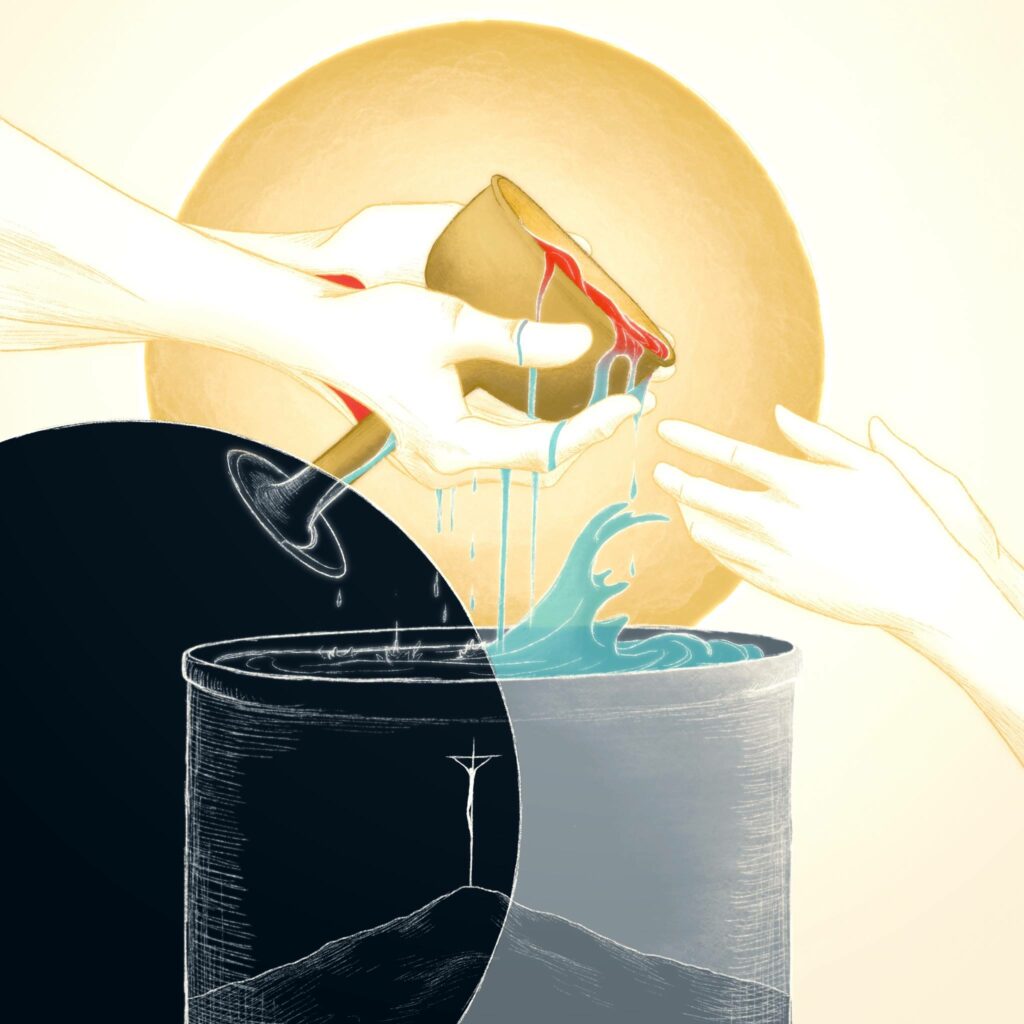
Candlestick or Lampstand
As worshipers entered the tent, the menorah, a golden lampstand, was on the left side. The holy place had no windows to allow light to enter, so the lampstand provided the light necessary for the work done by the priests. But this seven-branched candlestick served more than a merely practical function. It was to be a sort of replacement for the Tree of Life.
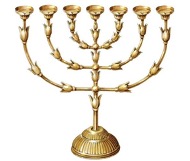
Although God banned Adam and Eve from sacred Eden, he provided a substitute tree in the tabernacle. So, in a sense, his holy sanctuary was a new Eden in the fallen world.
All around the lamp on the tent’s curtain were flowers and plants. The menorah “tree” had branches stemming from it with blossoming buds to fill this new Eden with the fruit of light.
Fire and light were evocative of God’s presence and direction throughout the scriptures, and now they embodied his presence and direction for the priests and the people.
Later, this lampstand became symbolic of God’s Spirit (Revelation 4:5) and his churches throughout place and time (Revelation 1:20).
The Apostle Paul built on this imagery when he explained, “The Spirit has shone in our hearts to give the light of the knowledge of the glory of God in the face of Jesus Christ” (2 Corinthians 4:6).
Believers today reflect the love and light of Jesus, the “light of the world” (John 9:5), who turned the “tree of the cross” into the “tree of life.”

Table of the Presence
A table piled high with twelve loaves of bread in the presence of a holy God was opposite the holy place from the lampstand.
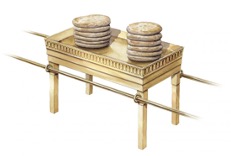
This lechem panim, more literally the “bread of the face,” represented the fellowship that God wished to have with all twelve tribes of Israel.
Every Sabbath, the loaves, infused with the holiness of God, were eaten by the priests as they ingested sanctification.
The Lord used many meals in the Old Testament to foretaste the fellowship meal of the Lord’s Supper (Communion) that believers now eat.
Receiving bread and wine filled with the presence of Christ, those who trust in Jesus, too, ingest God’s holiness gifted in body and blood for the forgiveness of sins. Modern believers, too, are blessed by a restored fellowship with God and one another.
Each time a believer receives the sacrament of the Lord’s Supper, they remember Jesus’ body and blood given and shed to forgive their sins. Each week as believers stand empty-handed waiting to receive the bread and the wine, they are aware that there is nothing they have done to make themselves right with God but that he has done everything necessary for them to be made right with him. Therefore, the Lord’s Supper is a most precious gift from God.
Participation in it is not about the recipient sending a message to God or about renewing a covenant with God. It’s not about what the recipient does at all. It’s all about Jesus confirming that his new covenant of forgiveness applies personally to his children through faith. Each week, in the sacrament, Jesus says, “This meal shows you how much I love you.”
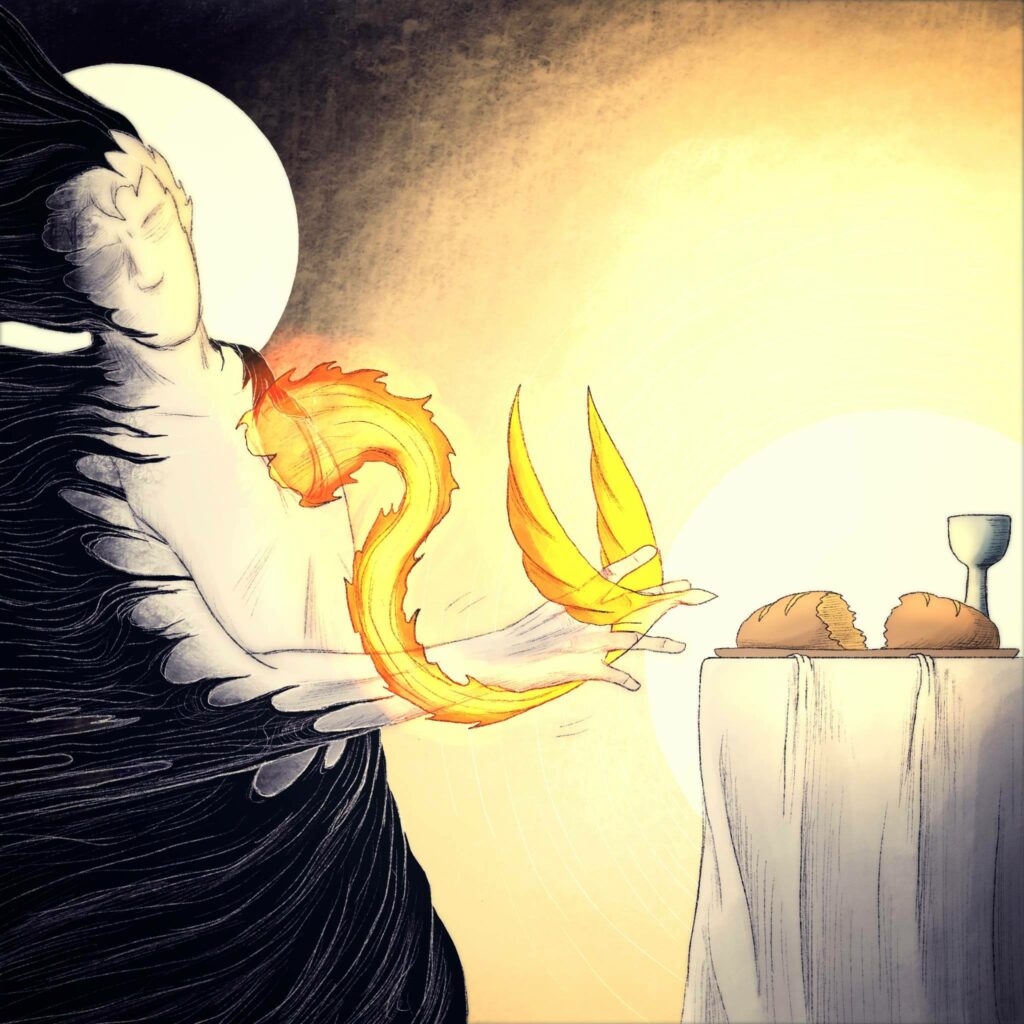
Altar of Incense
On the west side of the holy place, against the curtain dividing the holy chamber from the Most Holy Place, was the final piece of furniture, another mizpah. The horns on this altar were purely ornamental as no animals were to be sacrificed upon it.
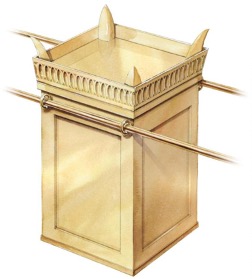
Instead of the flesh of animals, this altar burned incense. The priests offered aromatic q’toret, incense. Morning and evening, the fragrance was kindled as the petitions of Israel, fired by fire, and the Spirit wafted in a cloud around God’s throne of grace, his mercy seat, in the Most Holy Place.
The smoke of the burning incense, which was to be continual, represented the people’s prayers.
So too, in the New Testament era in Revelation’s heavenly worship, there are “golden bowls full of incense, which are the prayers of the saints” (5:8).
Today our mouths, like censors, breathe out the incense of prayer, which Christ our high priest combines with his own before the Father’s throne.
We join the saints of old in reciting, “Let my prayers rise before you as incense, the lifting up of my hands as the evening sacrifice” (Psalm 141:2).
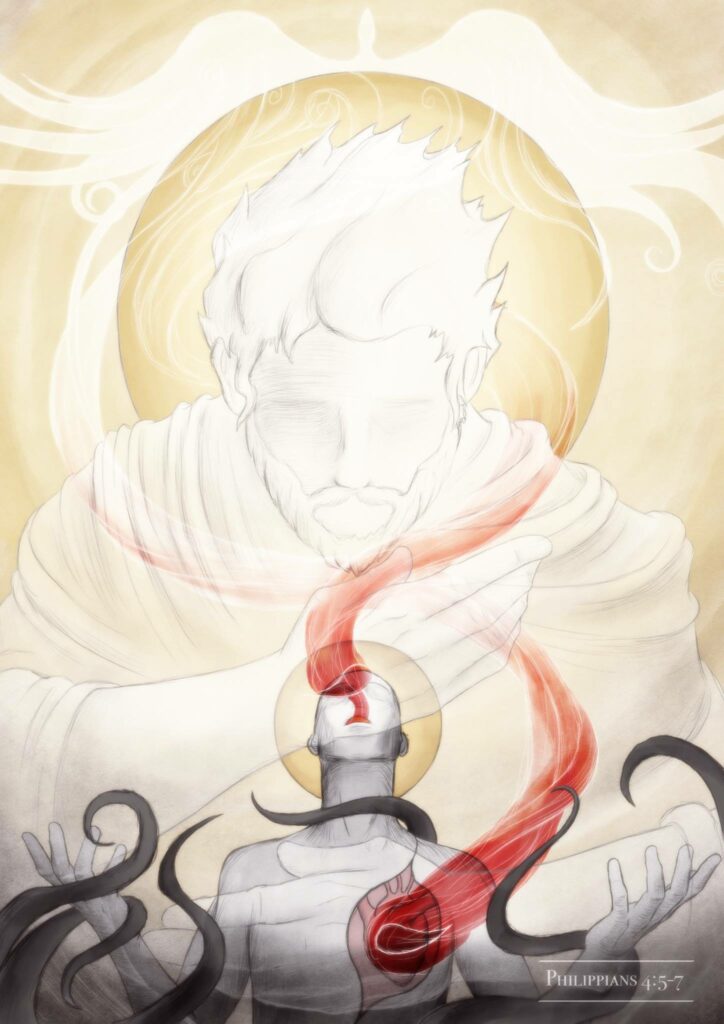
The Curtain or Veil
When he created the world, God divided the light from darkness, land from the sea, and heavens from the earth. So likewise, when God drove Adam and Eve from Eden, with a guarding angel carrying a flaming sword, he separated them from where they had walked with him and had partaken of the Tree of Life.
In the tabernacle, God once again divided. Guarding the Most Holy Place with an angel-ornamented four-inch parochet curtain, God separated sinful man from holy God.
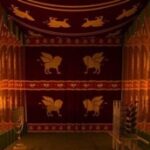
One day each year, on the Day of Atonement, the high priest could pass through the divide, but only with blood poured on the mercy seat and burning incense clouding God’s imminent glory.
On Good Friday, the veil tore in two from top to bottom, and God demolished the division, bringing his glory to all nations in Christ.
Now, through Christ and his shed blood, all humanity has direct access to enter into the presence of holy God. Through Christ, there is no more division or separation (Hebrews 10:19–20). By Jesus’ death, with the veil of his flesh torn, the curtain is open, and by his indestructible resurrected life, the Christian can draw near to God and find blood-bought grace for every need.
As a result of Jesus fulfilling the law and rending wide the curtain, the practices of the Old Testament temple and the Aaronic priesthood became obsolete. However, before Christ returned to his Father’s side, he instituted the two sacred reminders of his love for us and of his completed work that we have already mentioned.
In the sacraments of baptism and the Lord’s Supper, God shows us he is the one who did the necessary doing.
In water, bread, and wine, with his powerful Word, he grants us the forgiveness of sins, entrance into the family of God, and assurance that those who trust in him will live with him in heaven forever.
Through the working of the Holy Spirit and the gospel in Word and sacrament, God brings men and women everywhere to faith and seals them as a bride to Christ’s body, the holy invisible Christian Church.
Our great bridegroom Christ has done all to bring us to himself.
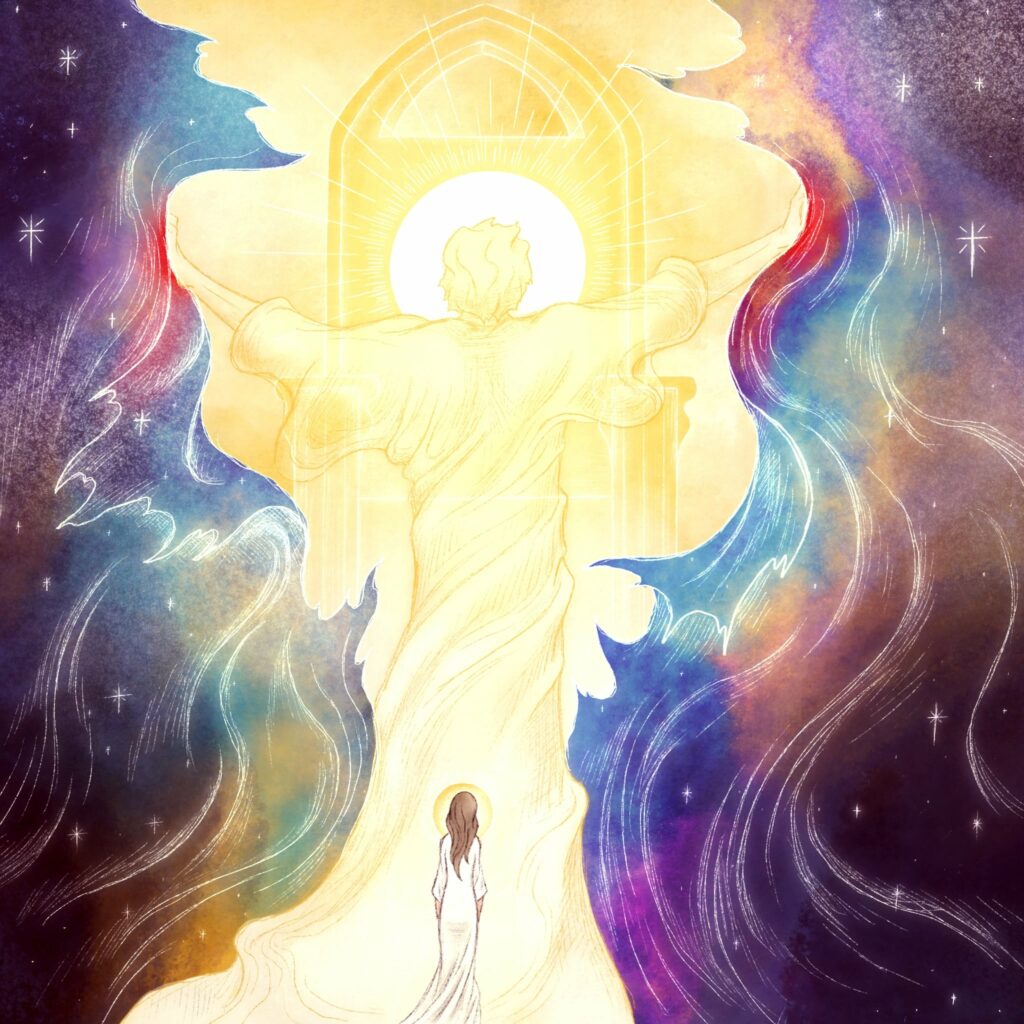
Ark of the Covenant
The aron, Ark of the Covenant, was the only piece of furniture in the Most Holy Place. This magnificent chest contained the covenant documents, including the 10 Commandments, Moses’ staff, and the vessels filled with manna.
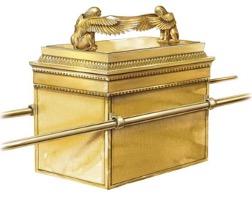
Later, King David called the ark “the footstool of our God” over which “he is enthroned as the divine King of Israel” (1 Chronicles 28:2).
The ark, lost during the Babylonian siege of Jerusalem, would not have been in the Most Holy Place when the curtain tore on Good Friday. But appropriately, as Jesus made his dwelling among his people and made his enemies his footstool, the ark, now unnecessary, was nowhere to be found.
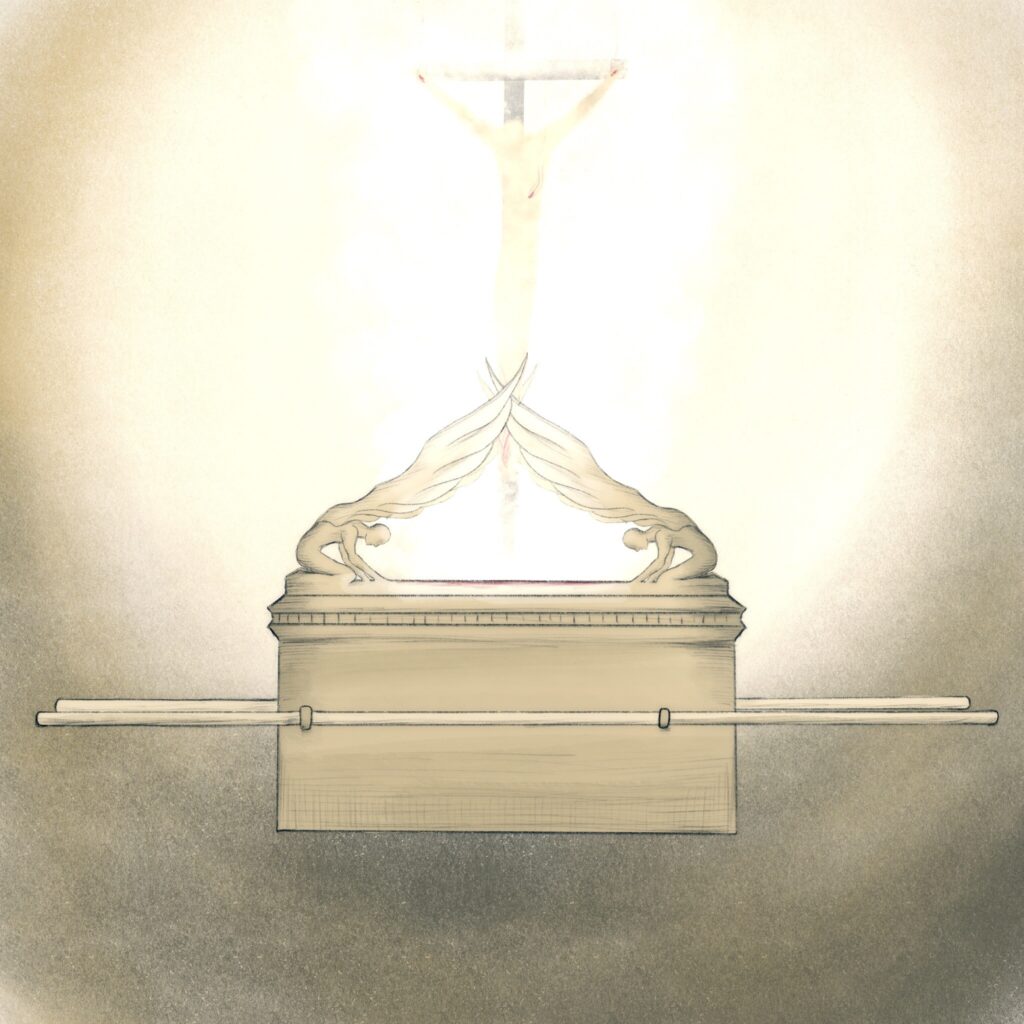
Atonement Cover
See: Exodus 25:17–18, 21–22, and 37:6–9
The kapporet, generally translated as “atonement cover” or “mercy seat,” describes the golden cover placed on the ark of the covenant. Two cherubim whose outstretched wings formed God’s earthly throne were seated on it.
Because God “lived” there, the Most Holy Place had to be filled with a cloud of incense on the Day of Atonement, lest the high priest sees him and die. Of course, all forgiveness and purging of sin are possible only because of God’s forgiving grace and mercy.
On the Day of Atonement, the priest brought a bowl of blood into the Most Holy Place and spilled it on the atonement cover. The blood visually covered up the “you shall” and “you shall not” of the commandments, declaring them atoned by the blood of a future and final sacrifice.
Later, in Romans 3:24–25, the Apostle Paul used the word hilasterion, the Greek equivalent of the Hebrew kapporet, to explain the “propitiation” Christ performed.
Paul describes the glorious truth of justification by grace alone through faith alone in Christ alone in this extraordinary passage.
[A]ll are justified freely by his grace through the redemption that came by Christ Jesus. God presented Christ as a sacrifice of atonement (hilasterion) through the shedding of his blood—to be received by faith. He did this to demonstrate his righteousness because, in his forbearance, he had left the sins committed beforehand unpunished by his blood.
Romans 3:24-25
Notice closely, what Paul says, we did not put forward Jesus to God to turn away his wrath. Instead, God put forward Jesus to provide a propitiation for us.
Our sins deserved God’s wrath, but he gave Jesus as a propitiation, a sacrifice turning away his wrath and appeasing his just anger. All we do is receive it by faith!
God publicly displayed his dear Son as a blood sacrifice to turn away, quiet, and satisfy his just anger with sin, the benefits received by faith. This stunning action demonstrates God’s righteousness in his mercy! It shows how he can be patient and forbearing without compromising his justice.
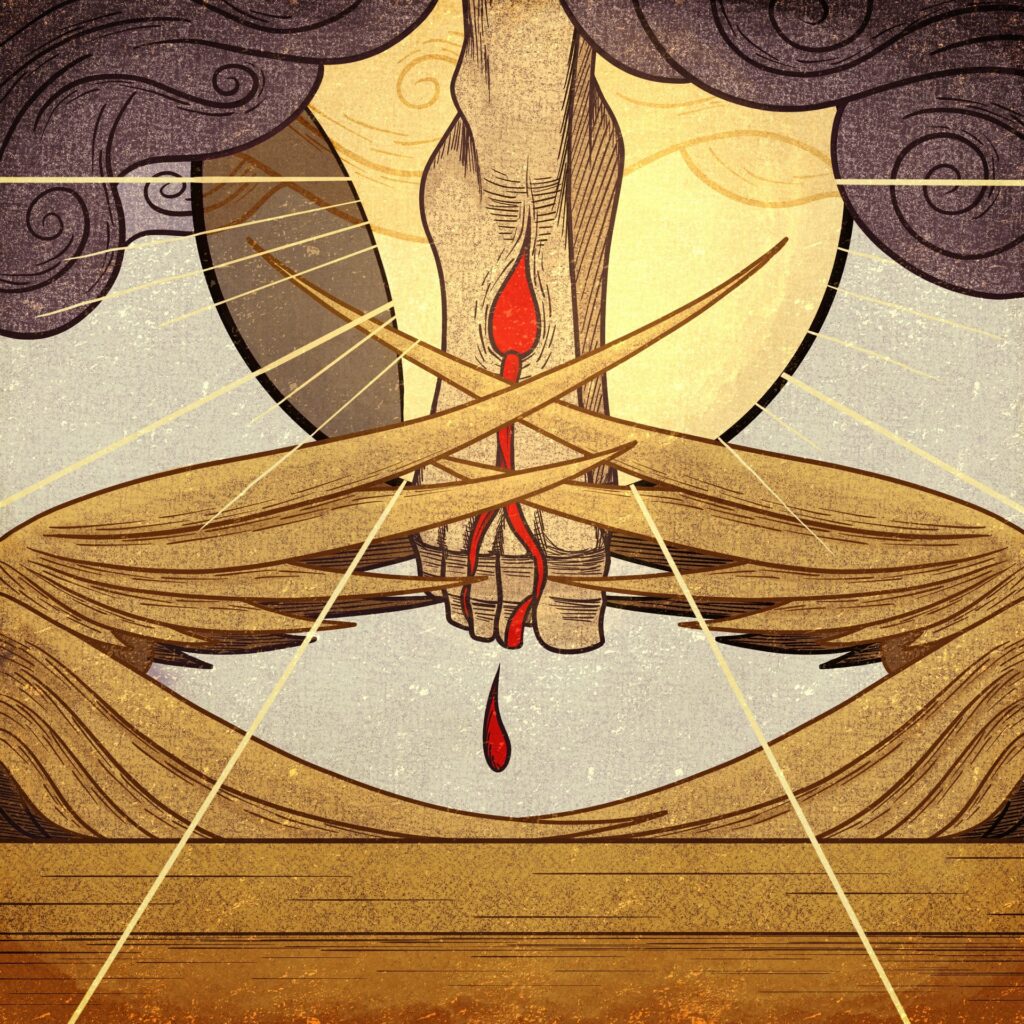
Jesus is represented in the New Testament as the priest who performs the atonement sacrifice, as the one who is himself the atonement sacrifice, and as the place where the atonement sacrifice occurs.
Everything we need for God’s forgiveness, for the removal of God’s anger, and for reconciliation with God himself can be found in Jesus.
High Priest Garments
The glory and beauty of these holy garments were the glory and beauty of the Messiah. The high priests of Israel were vested like “our great high priest, over the house of God” (Hebrews 10:21). Their vestments were vested with the prophecies of the one who would clothe with his righteousness.
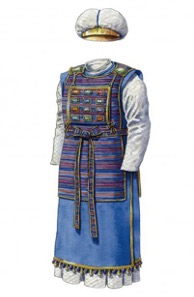
The priest’s vestments were made of the same materials as the tabernacle, which means that the high priest is a living personification of the meeting place between God and man, a human tabernacle.
Clothed in these robes of blue, purple, and scarlet (Blue = heaven, God / Scarlet = blood, humanity / Purple = the meeting of the two in a mediatorial union), the high priest became the representative of man to God and the representative of God to man and—in himself—the place where the two met.
God gave these things as images and shadows of a truth that came before them and would come to fulfill them; namely, the incarnate, crucified, and risen, Jesus Christ. The Apostle John helps us see this when he tells us that the “Word who becomes Flesh” and “dwelt” or “tabernacled” among us.
By the illumination of the Spirit given to him, John recognized the incarnate flesh of the eternal Word as the reality toward which the tabernacle and the vestments of the priest were pointing.
The flesh of the God-Man is the true tabernacle, is the true priestly vestment, and when the scarlet of his bleeding body is raised on the tree into the deep blue of the heavens, he becomes the one robed in the sacred purple of the True High Priest.
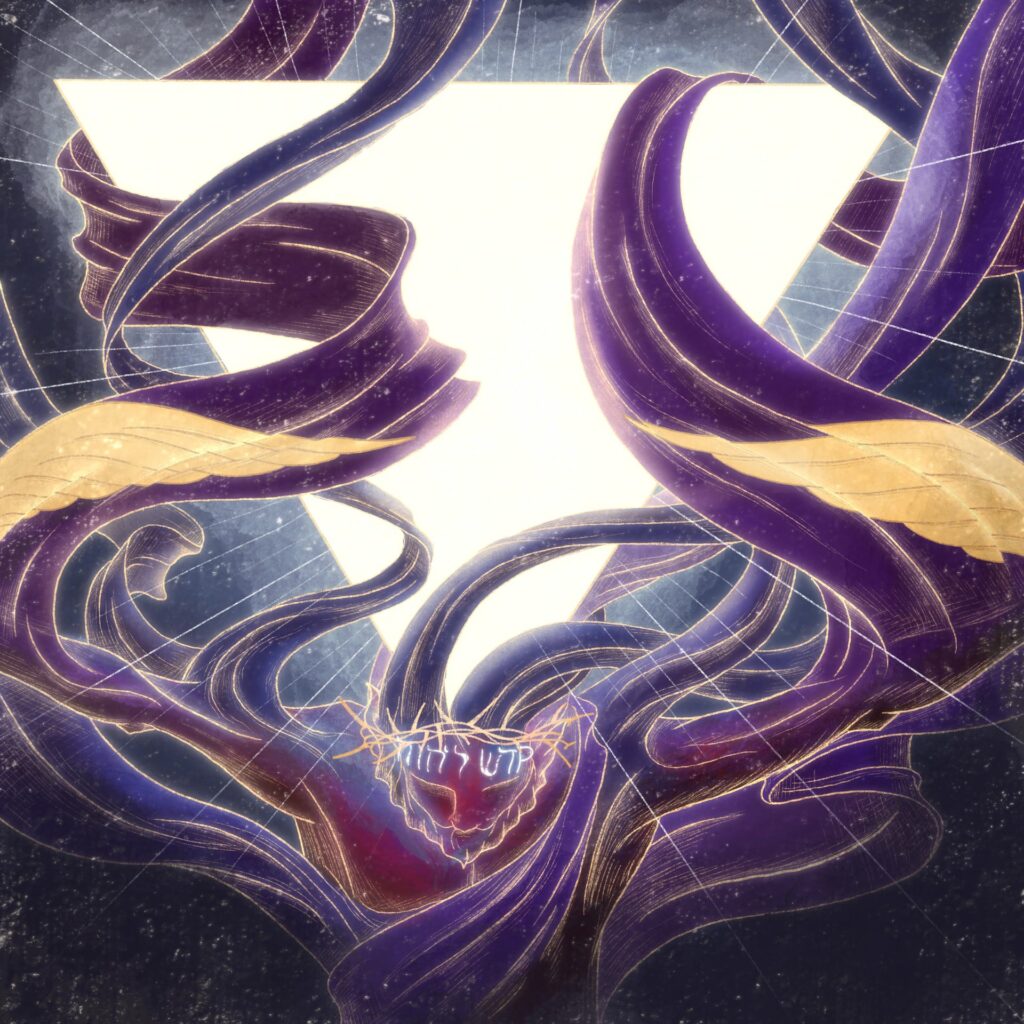
Later, when John saw Christ in the book of Revelation, in a tabernacle-like setting full of lampstands, he was dressed in a “long robe” “with a golden sash around his chest” (Revelation 1:13).
The exact Greek words used in Revelation for “long robe” and “sash” are used in the Septuagint (Greek translation of the Old Testament) to translate the robe and sash of the high priest (Exodus 25:7; 28:4).
Review
Imagine being an ancient Israelite participating in tabernacle worship in the wilderness.
- What would the experience there teach you about God and his attitude toward sin?
- What was the structure of the tabernacle designed to teach?
- What were the sacrifices intended to teach?
- What piece of furniture and the pictures of Christ impacted you the most? Why?
Credits & Resources
Christian author Chad Bird offers excellent exegetical commentary and insights on the tabernacle in his Unveiling Mercy devotional.
Likewise, Christian artist Chris Powers provides an extraordinary visual exegesis (explanation) of the tabernacle. Thanks to Chris Powers for his words and beautiful images shared throughout this guide.
We have combined and condensed Bird and Power’s wisdom throughout this study with analysis from The Holy of Holies by Pastor Logan Wolf and “The Tabernacle: Its History and Use” found in CSB Holy Land Illustrated Bible.

